What Happens to Your Coffee As It Sits, and the Science Behind It
Is there a hard time stamp on how long a cup of coffee retains its freshly brewed flavor before it's past saving and might as well be thrown away? We investigated.
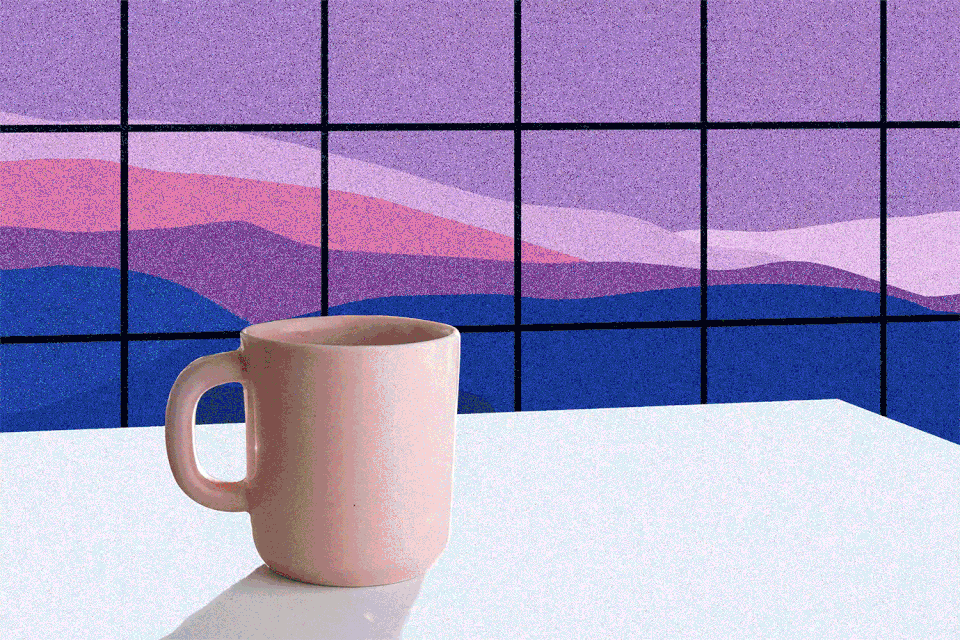
Serious Eats/Sarah Maiden
I am not a morning person. Despite spending most of my 20s working opening shifts at coffee shops—waking up with just enough time to brush my teeth and throw on some clothes before my usual 6 a.m. shifts—being a barista was an ongoing fight against my natural state. I am a morning curmudgeon who can't be bothered to stir from bed before hitting the snooze button thousands of times. Once I’m up, I tend to move at a snail's speed getting my day started.
Being a slow starter in the morning also means I often pour myself a mug of coffee and completely forget about it, which I'm sure has happened to us all. Maybe you get a phone call, or maybe a kid needs something. Or maybe you just walk into a room, set your mug down, forget about it and walk away, only to discover your frigid cup hours later.
So, what should you do with that forgotten mug? Should you throw out your cup of coffee, even if you just abandoned it for a few minutes? Is there a hard time stamp on how long a cup of coffee retains its freshly brewed flavor before its past saving and might as well be thrown away? (Or just slammed down if you really need that caffeine and don’t have time to make a new cup?)
We wanted to see how coffee flavor changes over time as it cools, so we put it to the test. I brewed coffee and tasted it at set intervals over two hours to analyze its flavor and to look into the science of what is happening to the coffee’s flavor as its temperature drops. I wanted to find out if there is an ideal time frame during which a cup of coffee tastes its best. Just how bad does coffee really get as it cools? I also performed side by side taste tests in which I compared the flavor of coffee that had been reheated in the microwave to the same batch of coffee left sitting for the same time, without reheating, and to fresh coffee to see how zapping it affects the quality. Finally, I applied my knowledge of flavor science to fully understand coffee’s flavor journey. Here’s what I found.
The Science Behind What Happen's to Coffee's Flavor as It Cools
Two significant factors impact how we perceive the flavor of coffee over time. Strangely enough, they almost fight one another. First, volatile components in coffee dissipate over time, meaning the sooner we can drink our coffee, the more flavor components are available to us. But the second component, temperature, inhibits our ability to experience the full range of flavors because humans are bad at tasting at temperature extremes (either hot or cold), meaning the closer to body temperature you can drink your coffee, the more flavor and complexity you can taste.
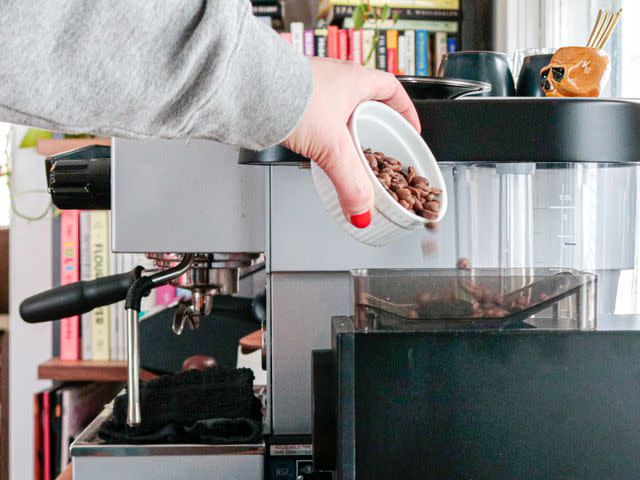
Serious Eats/Ashley Rodriguez
How volatile compounds affect flavor: First, volatile components in coffee dissipate as coffee cools. This includes things like lipids, amino acids, and chlorogenic acid—but the specific type and amount of volatile components in a bean are significantly affected by the variety of bean, roast profile, grind size, brewing method, and even the kind of water you use.
Dr. Christopher Hendon, an associate professor of chemistry at the University of Oregon and co-author of the book Water for Coffee: Science Story Manual*says that the specific compounds you lose over time depend on the coffee itself, but you're generally losing aromatics (the things that make coffee smell good). Since flavor comes from both our sense of taste and smell, this significantly impacts what we perceive in the cup. Hendon notes that "If you like the smell of the coffee when you grind it, that's what you're losing [when you allow it to cool]."
*(He’s currently working on a second edition of the book, the first edition is nearly impossible to find. I had to check out a copy from a friend of mine like it was a library book, and when visiting my house for dinner weeks later, he stealthily took it back).
What we describe as the flavor of coffee is a combination of what we taste and what we smell, and because many of the things that contribute to what we smell dissipate over time, we want to enjoy them as quickly as possible. “Most of coffee's flavor is retro nasal, which is lost with the cup sitting over time,” says Hendon.
How temperature affects flavor: The second major factor that impacts our ability to perceive specific flavors is the coffee’s temperature. "As you move further away from your body temperature, the thing you're tasting and smelling becomes more difficult to perceive," says Hendon. He notes that we're bad at perceiving flavor at the polar opposite ends of temperature—very hot or cold. If you’ve ever heard you should drink crappy beer ice cold, this is why: When a beer is very cold, it’s hard to taste the off or negative flavors. The same is true with coffee, just on the other end of the temperature spectrum.
Hendon cites a study published in 2000 in the journal Nature "Thermal stimulation of taste," by Alberto Cruz and Barry G. Green, which tracked flavor sensations and their perceptibility over different temperatures. "Not every smell and taste comes into your perception at the same rate," Hendon explains. Hendon says this is biological: “Humans can taste sweetness more as things progress towards body temperature… because you need to know if the plant you're eating is going to kill you (bitter) at more temperatures than if the plant you’re eating tastes sweet.”
Coffee has bitter components called chlorogenic acids, which you can pretty much taste at most temperatures. It’s other more pleasant notes that generally come out as coffee cools. "You need coffee to be dropping as close to body temperature as possible to be able to taste everything,” says Hendon.
But let’s go back to the crappy beer analogy. Like beer, coffee can vary in flavor based on quality. And quality isn’t just impacted by growing conditions, but rather all along the supply chain, from how it’s stored at various stages to how it’s roasted. As coffee cools, quality issues will really jump out. "For some coffees, you might not want to taste everything," Hendon says. High quality coffee that’s brewed well will probably taste pretty good as it cools, but low quality coffee or coffee that’s brewed poorly will show all of its bad flavors.
It feels like the loss of volatile components is competing with our ability to taste more fully as items get closer to body temperature, so what’s the ideal temperature to enjoy coffee? Because every coffee is made of different compounds, it really depends. A coffee from Colombia might have different volatile components than one from Ethiopia; a darker roasted coffee will have different volatile components than a lighter roasted coffee, so that ideal point can be hard to find. “So the tipping point [is] between being able to taste everything, and not everything being available to taste,” says Hendon. With those caveats, I forged ahead and tested one of my own favorite brews at various temperatures to see how it changed over time.
The Temperature and Time Taste Test
There's a lot of science and research dedicated to exploring how flavor changes in coffee, from how it's grown to how it's brewed. But theory is different from practice, and I wanted to see if I, an experienced but realistic coffee taster, could tell the difference in flavor as a coffee cooled.
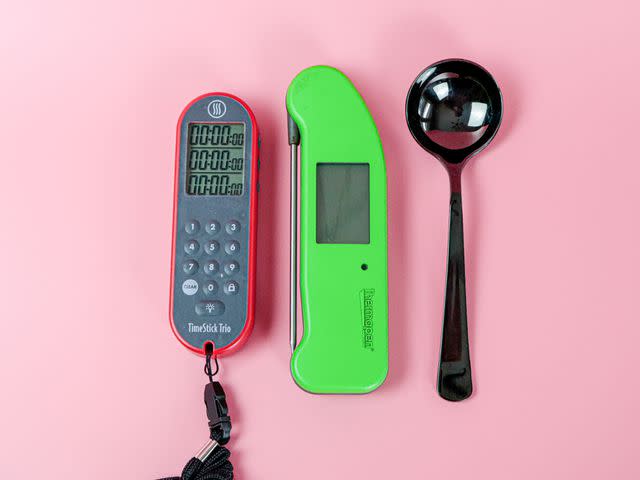
Serious Eats/Ashley Rodriguez
The Test Set-Up
I designed an experiment in which I brewed a cup of coffee on my everyday coffee brewer (a Ratio 6, which I picked as my favorite brewer when I tested coffee makers for Serious Eats) and tasted and temperature tested (using an instant-read thermometer) every ten minutes for the first hour, then again at the one-hour and two-hour mark. Precision was key to this experiment: I took the temperature of the room (it stayed consistently 69℉), and I didn't open any doors or use other appliances that might change the temperature of the room (Hendon notes that this could impact how the coffee cools and changes).
I brewed a blend from Kin Kin Coffee called Weirdland at a 1:16 ratio of ground coffee to water (for this experiment, I used 60 grams of coffee to 960g of water). After the coffee was brewed, I immediately poured exactly eight ounces of coffee into the most standard diner-style mug I own, since volume affects the rate of temperature change. (Side note: Finding a standard sized coffee mug was difficult as I live in a house full of coffee lovers and we have an interesting collection of funky mugs, few of which were the right size for my tests. My only diner mug features an illustration of David Letterman, made by Variety Coffee Roasters back when I worked there in the mid-2010s.)
The Results
Here is a breakdown of the coffee’s temperature, my tasting notes, and a brief explanation of what’s happening in the cup at every interval of tasting.
Time | Temperature | Tasting Notes |
0:00:00 | 157℉ | Flavor was a bit too hot, so I had to decant and taste. Pretty balanced, a little acidity in the front, but mostly just hot. |
0:10:00 | 125℉ | Flavor was balanced, more acidity and sweetness present; this was super pleasant. Still felt like it was hot but not burning. The aftertaste lingered nicely and I felt like I was getting the sort of tannic structure you might get from dried prunes or purple fruits. |
0:20:00 | 110℉ | This was probably the most dynamic — lots of acidity, drank like sparkling grape juice (not wine!), was the most interesting on my tongue, and still felt pleasantly hot without burning. Definitely felt the most “flavorful.” |
0:30:00 | 102℉ | First sip I’ve taken that I wish was a teeny tiny bit hotter. More bitterness on the back end, but still had a lot of sweetness and acidity. But the 110℉ cup definitely felt more dynamic. |
0:40:00 | 95℉ | There’s a note on the coffee bag that says this coffee tastes like caramel, and this is the first time I’ve been able to identify it—the coffee has tasted sweet, but this is the first time that it felt like a tangible flavor I could pick out. Some tannic bitterness at the end. |
0:50:00 | 91℉ | Felt like I was sipping on caramel. Really sweet and lovely, but this is the first time I went from, “I wish this was hotter,” to “This is cold.” |
1:00:00 | 85℉ | The flavor transformed from caramel to flat cola, which makes sense (flat cola basically just tastes sweet without any complexity). Testament to this being well-roasted: I didn’t get a ton of negative or off flavors. |
1:30:00 | 76℉ | Not much is happening here. This tastes fine, but it's cold. |
2:00:00 | 71℉ | Cold starting to outweigh remaining pleasant flavors. This actively tastes and feels cold. Still no off flavors, but pretty boring. |
0 to 30 Minutes
Temperature: Under ordinary circumstances, the rate at which coffee cools depends on several variables—how much was poured, room temperature, size of sips—but in general, coffee will lose most of its temperature in the first minutes and then begin to taper. With my highly controlled testing parameters outlined above, I noted a significant drop in temperature from the first reading (taken right when I poured the coffee) to the second (taken ten minutes later). The coffee temperature in this test dropped a steep 32℉ from 157 to 125℉ in just the first 10 minutes. After the initial 30 minutes the rate of cooling did seem to slow down.
Tasting Summary: I enjoyed the coffee overall most around the 20 to 30 minute mark (before that the coffee was either too hot, or I just didn’t experience as much flavor expression as when the coffee cooled down more). At that range, the coffee was still hot, between 102 to 110℉, and I could perceive the most flavor complexity—there was a nice balance of sweetness and acidity on the front end balanced by a bit of bitterness on the back end of tasting.
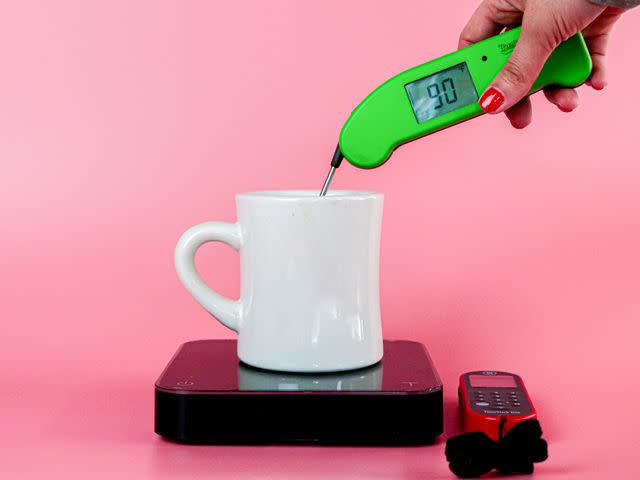
Serious Eats/Ashley Rodriguez
40 to 50 Minutes
Temperature: Between 40 and 50 minutes, the coffee temperature only dropped 4℉. At the 40 minute mark I wished the coffee was hotter, but it was still pleasantly warm, while at the 50 minute mark was the first point where the coffee tasted cold.
Tasting Summary: Around the 40-minute mark, I noticed a really specific (and delicious!) note of caramel, which reminded me of something Hendon said: "I tell roasters, 'Hey, you can give [customers] your flavor notes all you want, but if you don't tell them the temperature to taste that, then they're not going to taste it.'"
He's talking about the flavor notes on a bag of coffee. The bag of coffee beans I used for my tests said it tasted like dried fruit and caramel, and while I perceived sweetness pretty much throughout the drinking experience, it became crystal clear much later. This also made sense given my experience in professional tasting settings. (I’ve worked for roasting companies where lots of members of our team come together to taste new coffees and set flavor notes that get printed on retail bags and we taste a coffee repeatedly, often letting it get to room temperature before we finalize our notes.
1 to 2 hours
Temperature: At this time range, the coffee was cold—below body temperature—dropping from 81 to 75℉ over the course of the hour.
Tasting Summary: I was dying for this cup to be hotter, even though I got the most specific "flavors" later in the coffee-drinking journey. I didn’t perceive a ton of negative or off flavors, but the flavor transformed from caramel to flat cola, which makes sense (flat cola basically just tastes sweet without any complexity). The fact that the coffee still didn’t have any extreme unpleasant flavor when cold is a testament to starting with well roasted beans.
Keeping It Tasty: How Long Before Coffee's Flavor Takes a Turn for the Worse
So is there a preferred time and temperature range when coffee is at its best? Well, it’s complicated. With this test my ideal sipping time was the 10 to 20 minute range, where the coffee hovered around the 110°F mark, and it had a complex flavor as described above. But different coffees have different compounds that are different with each batch roasted.
As I wrapped up my testing notes, I realized I gave the coffee every opportunity to thrive: I used quality beans, ground my coffee fresh (using a grinder I love, the Fellow Ode Gen 2), and used a highly effective brewer. This makes me think that the issues with coffee tasting "bad" or "stale" as it cools have more to do with the tools and ingredients you choose to make coffee than it simply going bad over time.
If anything, this experiment convinced me that quality is everything and that a well-sourced and roasted coffee will remain pleasant as it cools. At no point did I find the coffee’s flavor unpleasant. And flavor-wise it even stood up well to freshly brewed coffee.
Although I perceived flavor sensations differently as the temperature changed, the coffee never tasted stale or old. So, if you notice that your coffee goes south the minute it cools, that might be more indicative of the quality of your coffee.
I've referenced this quote before in my review of temperature-controlled mugs, but it feels apt here: Coffee legend George Howell once said that drinking coffee should be a "thirty-minute pleasure trip," and part of the experience is enjoying it as it cools.
It’s incredibly pleasurable to drink something when it’s warm, but a really lovely coffee should taste good at all temperatures. Hendon says his ideal drinking temperature is around 140° F )60° C) “where it's hot enough that I won't just chug it, but it's cold enough that I can actually taste it." So, while I can say delicious coffee should be good at all temperatures, I don't mean to say you should just enjoy your room-temperature coffee—rather, you should try to keep your coffee hot as long as possible.
Regardless, there are some ways to prevent such a stark drop off in temperature: preheat your mug, cover your mug, or use one of the temperature-controlled mugs I mentioned above. The ones I recommend do a superb job of keeping the coffee hot without applying excessive heat that can impact flavor.
Let's Reheat It: What Happen's to Coffee's Flavor When It's Reheated in the Microwave
When your coffee gets unpleasantly cold, you might be inclined to throw it in the microwave. That's totally fine, but based on my tests and research, you'll never recapture the flavor it had when it was hot.
Hendon says microwaves "apply a specific energy associated with exciting OH bonds," or the bonds between water molecules. Things with a high water content—like coffee—get hot in the microwave "because the water vibrates." When water molecules vibrate, they generate heat, which can catalyze other chemical reactions of the particles surrounding water. Bonds between other compounds in your coffee can break down, with unpleasant results. For example chlorogenic acids break down into caffeic acid and quinic acid and are more perceptible as bitter.
Basically, you're not simply heating coffee when you throw it in the microwave but causing a whole new set of chemical reactions to happen, which can alter the flavor. But to see how the science plays out under real-life tests, I went ahead and zapped some coffee.
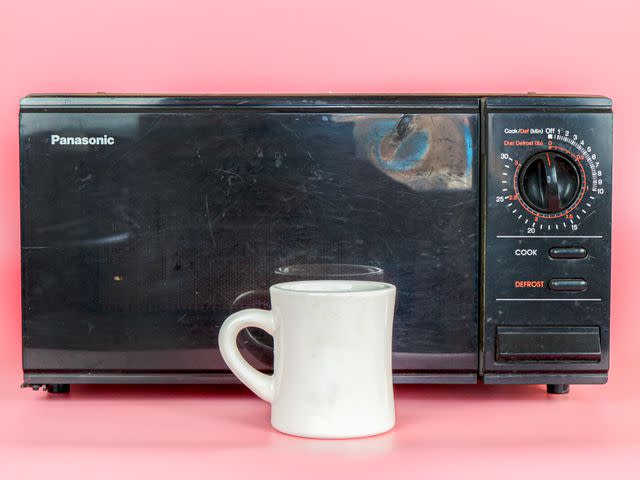
Serious Eats/Ashley Rodriguez
The Microwave Test
In the most millennial sentence I've ever written, I don't own a microwave, so my first step in testing was purchasing a cheap one at Goodwill. After my coffee sat for two hours, I threw it in the microwave for 45 seconds and measured its temperature using an instant read thermometer (a Thermapen in this case).
Taking the temperature of this coffee was wild. If I stuck the Thermapen all the way to the bottom, the temperature was significantly cooler than towards the top. (Hendon mentioned that because microwaves target OH bonds, things like a porcelain mug can remain pretty cool to the touch while the coffee inside gets hot.) The reading towards the top was around 160° F, so I took a sip immediately after reheating (warning: it was HOT. Don't do this.) and about five minutes later when it cooled down slightly to 140℉ and tasted it and compared it to coffee that was freshly brewed and coffee from the same batch that had been sitting for two hours, but not reheated.
The Result of the Microwave Test
The nuked coffee didn't taste like the coffee when freshly brewed or sitting and left lukewarm . By my professional standards, it tasted… weird. There were some strange "cooked" notes, and it had a fake sugar sweetness. But did I hate it? No. It was different, but it wasn't bad, and it felt nice to sip on something hot again after slurping lukewarm coffee all afternoon.
The Takeaway
My main advice is that you should always drink what you like: if you want your coffee piping hot at all times, I won't stop you from throwing it in the microwave. If you're like George Howell and are ready to embark on the 30 pleasure ride, try this experiment out for yourself and see how the coffee changes and opens up over time. There are no right or wrong ways to drink coffee, but understanding what variables impact flavor is key to delivering your best brew.
Read the original article on Serious Eats.

